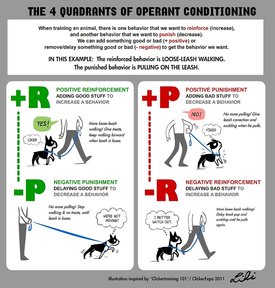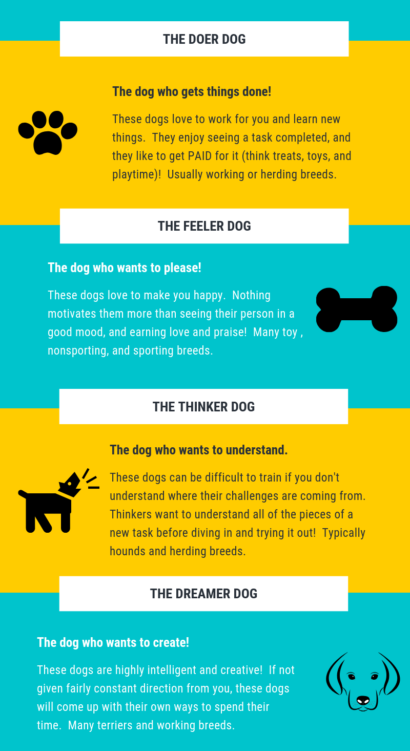The Buzz on Spring Canine
The Buzz on Spring Canine
Blog Article
The 9-Minute Rule for Spring Canine
Table of ContentsThe smart Trick of Spring Canine That Nobody is DiscussingSpring Canine Fundamentals ExplainedAn Unbiased View of Spring CanineThe Definitive Guide for Spring CanineSpring Canine Things To Know Before You BuyThe Best Guide To Spring Canine
In science-based training, in-depth understanding of pet dogs, their nature, behaviour, classical conditioning, punishers, reinforcers, every little thing pertaining to it enters into account. Science-based pet training is consistently being enhanced from the outcomes of investigations by pet behaviourists to try to absolutely recognize pet dogs. Science-based pet dog training or it can be taken into consideration as modern methods too.The pet dogs discover by the end results of their behavior, whatever those effects might be. In this method, all trainers adhere to the regulation of scientific research. The distinction in between the traditional and modern is that the traditional instructors are commonly uninformed of the legislation of the scientific research that underpins the outcomes they are obtaining.

Something failed. Wait a moment and attempt again. Try again.
The 2-Minute Rule for Spring Canine
We use cookies on our internet site to give you the finest experience by remembering your choices and repeat check outs. By clicking "Accept", you grant using ALL the cookies. Do not sell my personal details.
The majority of people like their fuzzy buddies. Nonetheless, not every moment is satisfying when your pet isn't trained to behave in specific methods or prevent unwanted actions. There are lots of methods passed on from unidentified sources that inform you the most effective means to obtain your canine not to do something. But what is the most effective approach, and exactly how do you make use of these methods? Find out the most common approaches for how to educate your canine, along with what methods not to make use of.
The 2nd is the reward-based method. Reward-based techniques make use of incentives only for the actions that you want your dog to adhere to. Aversive-based training makes use of techniques like loud, undesirable noises, physical modifications, and harsh scoldings to obtain your pet dog to act the means you want.
4 Simple Techniques For Spring Canine
Deals with, belly rubs, or various other dog-pleasing activities are used to reinforce that an actions was excellent. Different experts like one technique over the various other. https://springcanine.weebly.com/. The one that you make use of is entirely approximately you. Some people think that a rewards-based approach establishes up an "event series" for your pet where they associate you with happy feelings when they do what they're told.
That worry indicates that your pet does what they are told to stay clear of undesirable sensations. Dogs learn a lot like youngsters. They are close in intelligence to human two-year-olds. Immediate repercussions are all that they appreciate. As they expand, they begin to recognize our words. Some smart breeds will certainly respond to as lots of as 250! Every pet responds to the tone of our voice more than the actual words.
Flexible learning is exactly how well your pet dog gains from their environments and the atmosphere around them to address troubles. Functioning and obedience are just how well they learn the jobs and commands that you teach them. To get your canine to be obedient, you need to concentrate on training that uses obedience techniques and the details habits you want from them.
If you're educating your dog to be a loving family pet, you should think about reward-based obedience training. This technique does not establish fear-based actions in your dog. It in fact strengthens your caring relationship with them. Pets are wise sufficient to learn the behaviors that you want them to have. They are also wise adequate to discover what they can get away with.
Our Spring Canine PDFs

When your pet executes the habits, they must get their incentive. When you are using reward-based training, your canine needs to understand that there are effects for acting in a means you don't such as.
As an example, a pet dog that likes to leap as much as greet their human beings when they enter into the home can be unsafe for a child or an older grownup. To educate them not to lift at you, do not welcome them or provide attention if they raise.
The Best Guide To Spring Canine
Maintain a reward in your hand look at this web-site while you do this. When the pet dog does not jump, provide the treat, and repeat the task until your pet doesn't jump up when you come in. You must try this with all of individuals that your pet gets delighted to see when they enter your house.
When you're instructing your pet dog something brand-new, bear in mind that they have the focus period and intelligence of a two-year-old. Your training sessions should be brief and to the point. Restriction them to 15 minutes. Concentrate on one task or behavior to make sure that they do not become overwhelmed. Make certain that you're utilizing the exact same commands for the habits that you desire.
They might not know what to do. The American Kennel Club acknowledges 5 standard commands that every dog should know - i regret getting an australian shepherd.
Neighborhood animal associations can additionally aid you with behavioral problems or with fundamentals. The AKC has more than 5,000 clubs around the country.
Spring Canine Things To Know Before You Buy

Report this page